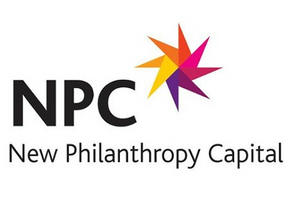There are fewer and smaller donations to local charities in the most deprived regions of the UK, according to new research.
The report by think tank Centre for Cities says that there is a higher density of charities in the more affluent south of England compared to regions with greater need.
Meanwhile, people in the south east of England are up to 15% less likely to give to charity compared to places of similar incomes in the rest of the UK, according to the report.
Charities in higher need areas, such as Yorkshire, West Midlands, and Wales, receive fewer and smaller donations than those in richer regions like the south east of England, researchers found.
Similarly deprived areas in the north east and north west of England have stronger preferences for local giving, researchers found, but they are limited by lower overall donation rates.
It therefore says that charitable activity in the UK does not complement the government’s levelling up agenda.
The report argues that more donations could be unlocked from richer areas and diverted to charities in poorer regions.
Report findings
The report says that in all higher need regions, the types of local causes donated do not reflect local need.
It found that London had the highest proportion of people donating locally to poverty-related causes.
Meanwhile in Wales, people were three times more likely to give to local charities dedicated to animal welfare and the environment instead of poverty.
The number of charities per 1,000 people ranges from 0.8 in Wigan to 4.6 in Oxford, the report says.
These findings echo NPC research last year that found there were fewer charities per 1,000 people in areas identified by the government as being in most need of support compared to the lowest priority regions.
Comparing places with similar average incomes reveals people in the north of England are more likely to donate to charity than those living in the south, the report says.
For example, residents of the northern suburbs of Leeds are twice as likely, 16%, to donate to charity as residents of Croydon in south London, 8%. Both places have a median income of £26,000.
London’s generosity is dependent on a small pool of very generous donors, the report says.
The report argues that higher rates of charitable giving could be unlocked in the places most able to give to help address needs across the country.
Recommendations
Centre for Cities recommends a more active role for local authorities in targeting local charitable donations towards local needs.
It suggests large national charities are best placed in the voluntary sector to ensure donations flow to areas with the greatest need, supporting local charities limited by local economic constraints.
“Their role should be to increase transparency and share data on where their donations are spent in order to fill in the gaps on the role of national giving in tackling regional inequality,” it states.
It also recommends “levelling up charity partnerships” between national and local charities, applying their combined knowledge and resources to reach deprived people in areas where local people are less able to donate to charity.
‘The ability to donate is ultimately related to income’
Andrew Carter, chief executive of Centre for Cities, said: “The mismatch between local ability to give and local economic needs from place to place is well known.
“The charities sector recognises that it can’t always reach the most deprived parts of the UK, particularly as resources have been squeezed over the last decade.
“The ability to donate and get involved is ultimately related to income so, to address it, we need economic growth and income growth everywhere. This would give everyone the increased chance to give to local causes.
“More can also be made of the donations that are given – from a levelling up perspective – by channelling a greater share of them to local issues related to economic deprivation.
“Local authorities, by raising awareness and helping to direct giving, can help people living in an area target their generosity towards issues where their help is needed most.
“In places where opportunities to volunteer time or give money are limited, this can make a big difference.”
Centre for Cities conducted a survey with software firm Focaldata in 2023 on a representative sample of 3,026 British residents.
Related Articles












